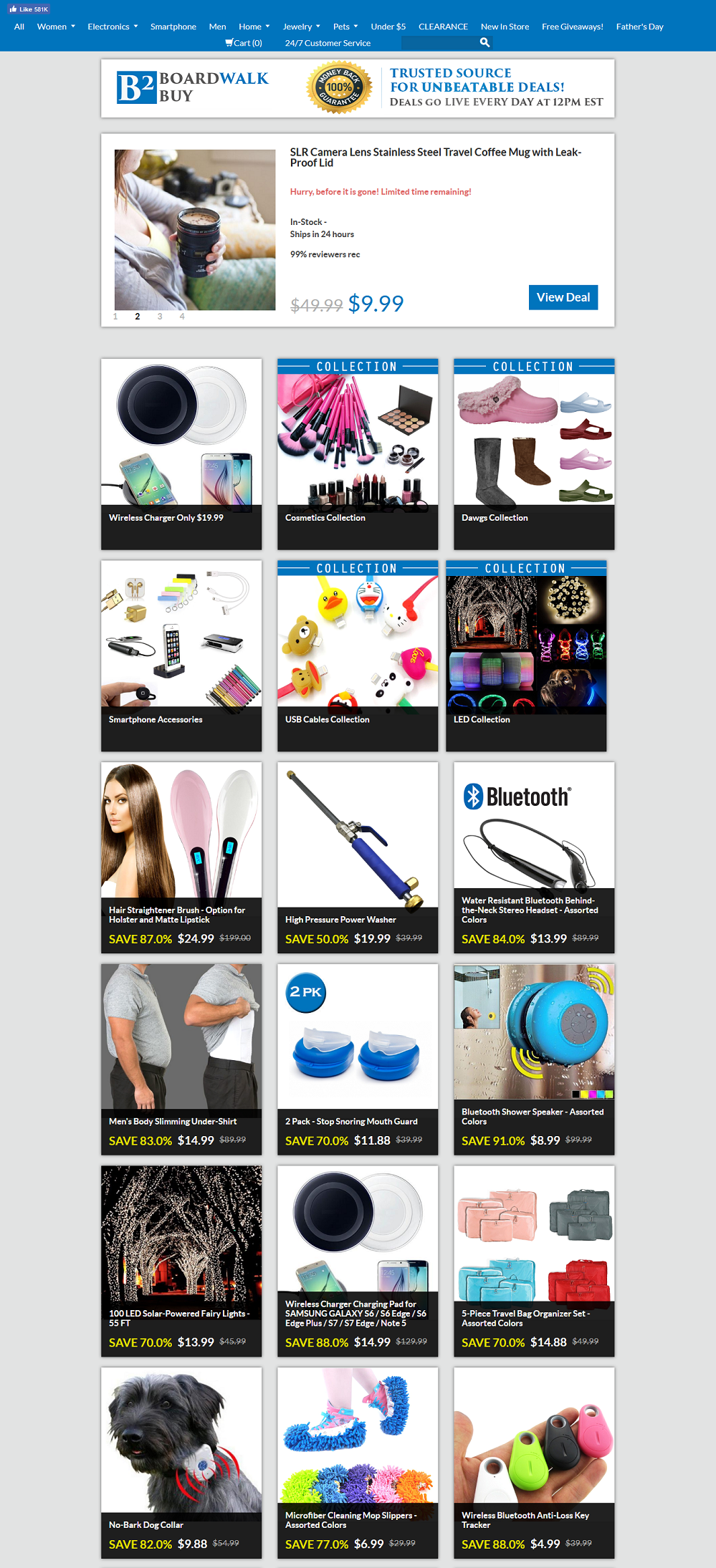With the flash sale site boom imploding...
What better time, Amar Gandhi figured, than to launch a new flash sale site.
“They were all dying off and filing for bankruptcy,” Gandhi says of the flash and daily deals sites of several years ago.
What did Gandhi see no one else in the space did?
First, Gandhi, founder of AN Commerce which is home to several brands, says the deals often offered on flash sale sites weren’t really deals. “Merchants selling on these sites had profit margins between 30-50-percent,” he says. “It meant the customer was often not getting the right price.”
Separately, besides shady flash sale sites not paying merchants for orders…
The customer experience, according to Gandhi, was often poor as well. Gandhi says less reputable merchants were known not to fulfill orders or not inform customers that their items were being dropshipped from China and would arrive in two months.
Even more important, Gandhi says the major VC-backed flash sale players had spent too much money on technology. In fact, Gandhi estimates the industry giants spent between $300-$500,000 building out their platforms.
“Their overhead was way too high and not sustainable,” Gandhi says.
To compete Gandhi would need to build a better mousetrap for a lot less money…
But nothing of the like existed out-of-the-box.
It Didn’t Exist, Until
The ultimate flash sale site…
At least according to Gandhi, would offer both customers and merchants a world class experience; one that promises customers a great price on popular items while simultaneously rewarding the best performing merchants.
“If a merchant wants to sell on our platform you can’t be taking fifty-percent margin,” Gandhi says. “We’re not awash with venture capital so every dollar we invest must generate a return which is why we are narrowly focused on the lifetime value of a customer.”

The site Gandhi envisioned had:
- The ability to accommodate merchants in multiple countries and allow them to easily and quickly upload products and fulfill orders
- The ability to scale on demand to handle significant spikes in traffic
- A custom built system that could handle between 2,000-10,000 orders per day and accommodate multiple vendors selling multiple products.
Importantly, Gandhi says building such a platform from scratch would also require that it be flexible in the future. “Making changes has to be easy,” he says. “We can’t wait two days on developers who want to take their sweet time to make a small change.”
Remember too, it had to all be done for much less than the half million dollars competitors had sunk into their platforms.
It’s Unfair (Which Is Good)
Scaling is tedious when you’re doing everything manually…
That’s why instead of downloading spreadsheets containing the day’s orders and sending them off to flash sale site vendors for fulfillment, Gandhi wanted to create a robust platform with a dashboard vendors could monitor, use to fulfill orders in real time, and offer customers a much-improved experience.
To turn his vision into reality, Gandhi chose Shopify but not to sell products or dropship as most merchants do. Instead, Gandhi used the Shopify API to creatively flex Plus and create BoardwalkBuy, a next generation flash sale platform connecting customers with merchants that offers a best-in-class experience.

Instead of costing $300-$500,000 as Gandhi says competing platforms cost, Gandhi says he used the Shopify API to build BoardwalkBuy for $30,000.
“That’s a huge difference in price,” Gandhi says. “The great thing about the Shopify API is that you can integrate with any system.”
The cost differential provides Gandhi a competitive advantage but it’s the platform itself that significantly differentiates BoardwalkBuy. Besides positioning Gandhi to monitor vendor product uploads and customer orders in real time, the platform offers customers popular products at deep discounts and easily scales to handle high-volume. The platform also allows vendors to easily export orders in multiple formats for more efficient order fulfillment.
Remember Gandhi's desire to partner with only the best vendors?

To ensure that’s the case, the platform was built to produce custom reports that, for example, automatically identify any orders that haven’t been fulfilled within a week which allows BoardwalkBuy to hold vendors accountable by transparently scoring vendor performance and offer an improved customer experience.
Specifically, BoardwalkBuy was built to allow Gandhi to make real time adjustments designed to reward top performers and drive incremental sales:
- BoardwalkBuy promotes products sold by merchants who ship faster
- When the company identifies a trend it promotes relevant products to lift sales
- The company investigates products getting lots of clicks but aren’t converting and fixes any issues inhibiting sales
“Shopify lets us do all of this,” Gandhi says. “Why would anyone start from scratch when Shopify has already built something that works. It’s easy to use and the API lets us create whatever we want without spending a fortune or having a team of five hundred people.”
It’s actually bad news, Gandhi says, for what he calls the old guard…
From Zero to $33 Million in 18 Months
Understand it was relatively labor intensive to build BoardwalkBuy with the Shopify API…
But 18-months after launching BoardwalkBuy in its present form has become a premier marketplace connecting vendors with trending consumer products and customers in search of great deals and has yielded the following results:
- More than $33.3 million in revenue
- 200% year over year growth
- More than 1.2 million orders processed
- More than fifty vendors now use the platform to upload products, inventory, shipping information, and tracking numbers without any assistance from BoardwalkBuy
Importantly, the BoardwalkBuy team suggests competitors in the space that are still in business are at a distinct disadvantage not only from a cost basis perspective but also because of an outdated mentality that prevents them from realizing the power of new technology.
 “It’s the old school developers and platforms who are trying to resist change that perpetuate the myth that Shopify isn’t customizable.”
“It’s the old school developers and platforms who are trying to resist change that perpetuate the myth that Shopify isn’t customizable.”
“It’s just not true. You can customize on Shopify and use it however you want to use it. We used the API to build something that didn’t exist eighteen months ago and today it’s a multimillion dollar business. So, of course, Shopify is customizable.”
Amar Gandhi
Find out for yourself
Shopify makes it possible to customize everything that matters to today’s ecommerce customers.
Automating full-scale campaigns, creating personalized buyer journeys, offering intuitive payments and direct social selling … the future of commerce is now.
Read more
- TULA, With Traffic Up 198% and Transactions Up 407%, Gives Thanks
- How Nestlé Is Using Shopify Plus to Target Millennials by Making Adulthood Suck Less
- How a Trip to Fiji with Tony Robbins Put Fanjoy On Track to Do $35M this Year
- How World Wildlife Fund Canada Uses Shopify Plus to Protect the Polar Bears
- Ecommerce Migration Case Study: Leading UK Retailer Migrates 11.1M+ Data Points in 16 Weeks
- At $15M in Sales, Red Dress Boutique Saves $100K & Grew Double Digits YoY
- Why Seth Godin Wrote a Book for People Who Don't Usually Read Books
- How an Indian Retail Conglomerate Sells Across Global Online Marketplaces
- How ORO LA Became a Multi-Million Dollar Fashion Brand in Two Years by Fueling Shopping on Instagram with “Imagination”


